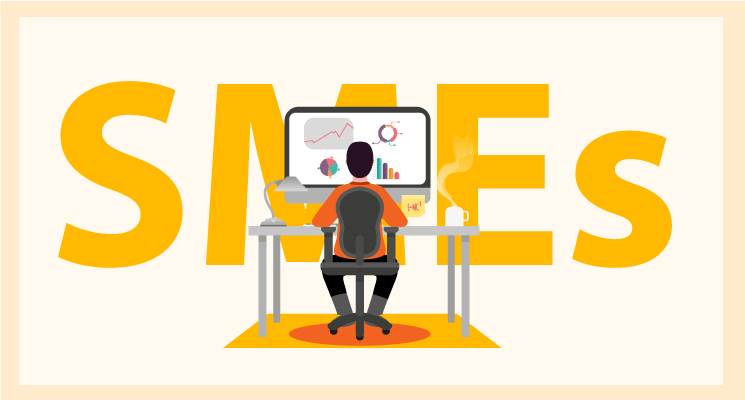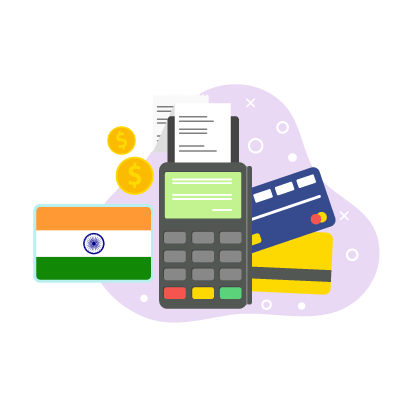Oftentimes, sales can be very challenging. In an effort to boost sales, small-business owners often turn to web pages, books, and seminars that claim to offer sage advice. Unluckily, many of them throw around several confused strategies that require you to memorize a thousand rules or techniques.
A much simpler way to increase sales is to familiarize yourself with the simplistic concepts of cross-selling and up-selling. Despite its fairly simple to learn, these concepts can significantly improve your sales if put into practice well.
So which one will be the best for your business: Cross-selling vs Upselling?
Let's find out!
What is Upselling?
Up-selling is the act of offering customers the opportunity to buy an item that is somewhat better than the one they are considering to buy. To make an up-sale, a salesperson may offer an upgrade, suggest a more expensive product, or persuade the customer to buy add-ons.
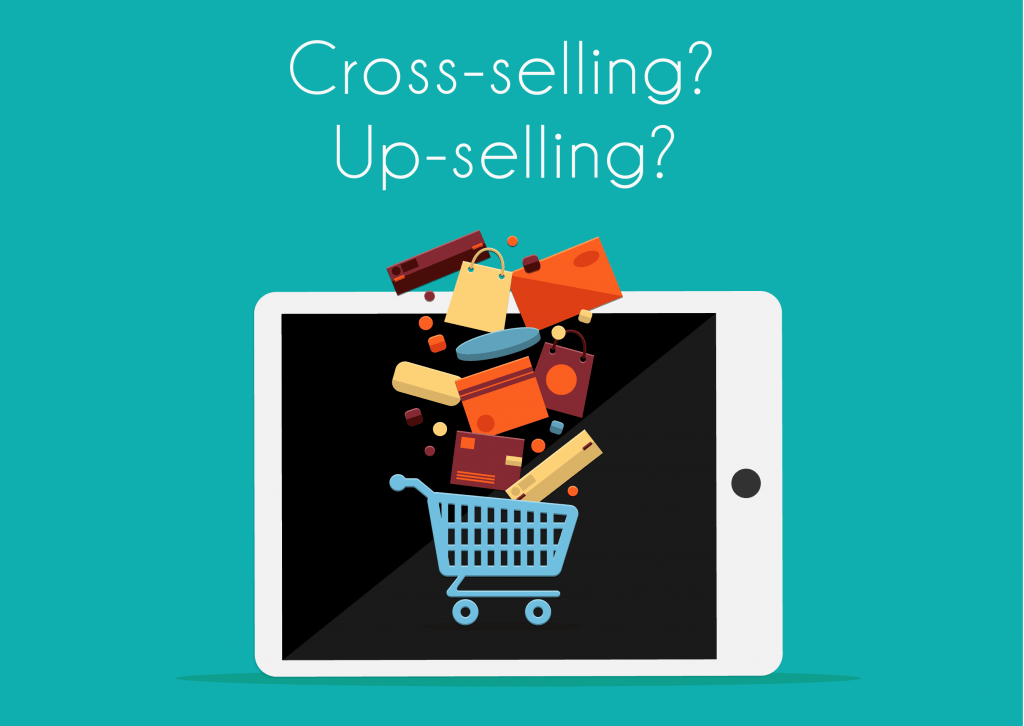
A common example of up-selling is when a KFC’s cashier asks you if you would like to upsize your meal, thereby urging you to buy what is basically the same meal, but spend only a bit more for a larger portion.
What is Cross-selling?
Similar to up-selling, cross-selling is the practice of offering customers additional goods that will go well with the one they are considering to purchase. To cross-sell, items that are complementary well to a current product will be recommended to go along with it.
For example, a savvy cross seller working at a computer shop might propose to a customer buying a new laptop that they may also need a wireless mouse or carrying case.
Upselling Examples
Upselling is a very common practice in both B2B (business-to-business) and B2C (business-to-consumer) situations. Here are some upselling examples:
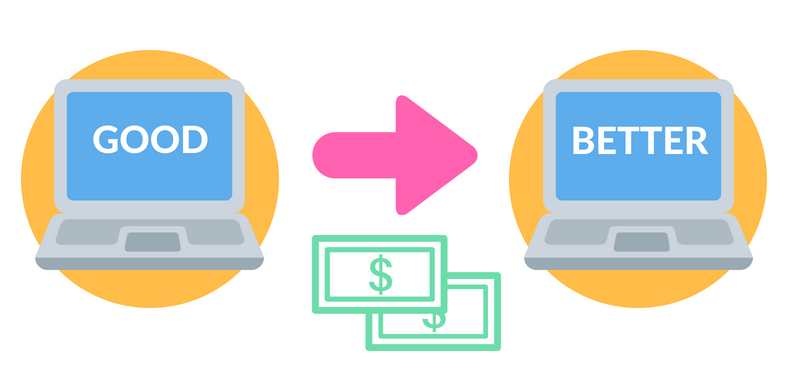
- As part of the airline check-in process, an airline staff will encourage the passenger flying coach to upgrade to a first-class seat.
- A menu in a restaurant gives diners the alternatives of adding chicken or shrimp to a salad for an additional fee.
- An online book retailer’s check-out process offers the audio version of a printed or e-book for a discounted price.
- An auto salesperson suggests that a driver should buy a vehicle with a more expensive trim package that includes more amenities such as leather seats.
- An online tool or resource is available for free in its most basic version, but unlocking premium, desired features requires paying a fee.
Cross-selling Examples
Amazon reportedly attributes as much as 35% of its sales to cross-selling through its frequently bought together” and “customers who bought this item also bought” options on every product page. That approach enables a retailer to prompt a shopper to buy a compatible product.
Cross-selling examples include:
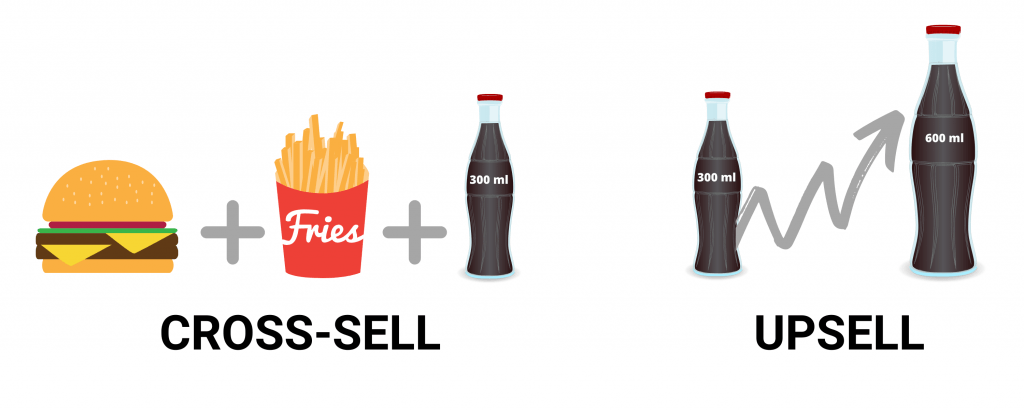
- A sales representative at an electronics store suggests the customer buying a digital camera should also purchase a memory card.
- A customer at a fast-food restaurant is asked, “Would you like fries with that?”
- At an eCommerce site, the check-out form prompts the customer to add a related product or an important accessory that is not included in the product being purchased.
- A new car dealer when making the initial vehicle purchase suggests the buyer add a cargo liner or other after-market product.
- A clothing retailer shows the shopper a complete outfit for them to see how pieces fit together and would buy all the pieces instead of only one.
Cross-selling vs Upselling: What is Suitable for Your Business?
Because the customer has already hit your site and already made a purchase, you cannot bombard him with thousands of product recommendations. You have to prove that you actually care about his satisfaction, and not just your sales. This is why it is worth you need to stick to one and only of the two techniques discussed: Cross-selling vs Upselling.
Probably, you won't be surprised if knowing that up-selling works twenty times better than cross-selling. When a buyer goes to a website with the aim of buying a particular product, they likely don't want to be distracted and misled by anything. When intending to buy a laptop, he will surely be keener on related information about the better features of another model than the opportunity of purchasing other little gadgets and add-ons.

In some circumstances, however, up-selling is not possible, and a good example is the hair shampoo market. In this situation, offering a product that costs just a little more does not make sense, but perhaps proposing a conditioner, mask or comparable product will be enough to improve the cart value.
Depending on Different Business Model
A company’s business model will dictate whether cross-selling vs upselling is more helpful. For instance, in an eCommerce business case, where customer acquisition or shipping adds a high fixed cost to orders, companies will usually want to maximize the average order value to reduce the effect of those costs.
Say you’re selling a $20 product with a 50% gross margin, $5 flat shipping cost, and $2 marketing cost of acquiring customers. The net profit when selling a single unit will be only $3. If you can cross-sell them to add a $5 item at the same margin, you are likely to package them together so that the shipping cost is barely affected and boost your net profit to about $5.50. Therefore, by just offering the customer to add complimentary items, you would be able to almost double your profit on the order.
On the other hand, some companies find it more valuable to prioritize upselling to get customers to upgrade to a higher-end model or add add-ons. For instance, businesses selling high-end electronics may find shipping and other flat costs are nearly negligible compared to the value of the item. Getting a customer to upgrade to a more costly version of the product can affect profitability more than adding another small item.
Depending on Types of Products Offered
A suitable tactic for your business between Cross-selling vs Upselling depends on the industries the merchants are operating in and the products they are selling.
The upselling strategy is ideal for products and services that are offered in various tiers, there are two characteristics in products you can upsell:
- They target the same types of customers, but at varied price points.
- They offer comparable base features, including different extra features.
If you have product line depth, which means a certain product line has a lot of versions with prices varying from the low, medium, to high, obviously you should upsell.
Nonetheless, the applications of cross-selling can be a lot more flexible. Technically, any of your other products can be shown to visitors while they’re browsing one in particular. Yet, the best way to implement cross-selling is to focus on items that are somehow connected to what customers have already had a look at.
Depending on Stages in the Buying Process
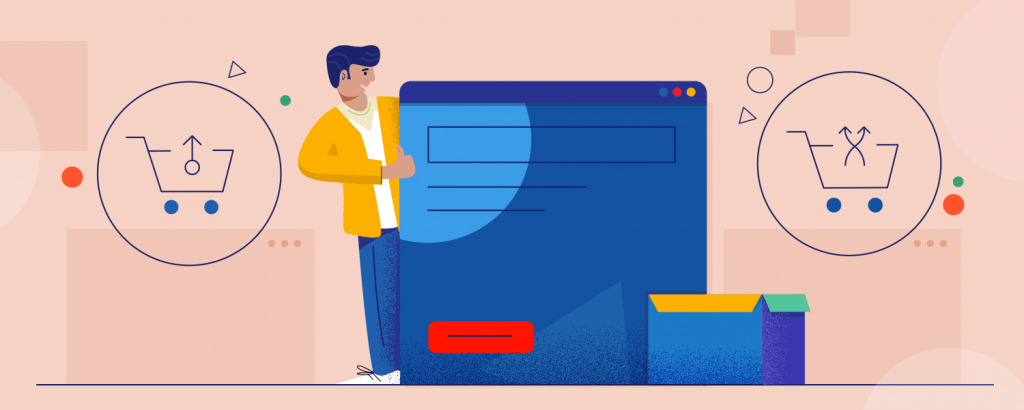
- If your audience is in the early and mid-stages of the buying process. Upselling offers will be a good method of educating them on the several options you have available for solving their problem.
- Conversely, when your audience is in the late stage of the process. They need to have decided upon a product in order for you to be able to suggest a cross-sell.
Depending on Other Criteria
You should choose to upsell if you …
- Have multiple tiered packages. The tiered model will be perfect when trying to promote customers to upgrade their purchase whether you offer bundled packages or similar products at varying quality levels.
- Offer subscription services. Both the purchase amount and customer loyalty can be increased by offering extended contracts at discounted rates (e.g. 2-year contract at a 10% discount).
- Target audiences in the “Education” phase. The stage of education in the customer journey is the best time to show the differences and benefits of your various product packages and help customers find the best solution matching their needs.
You should choose to cross-sell if you …
- Offer a variety of complementary products. “You might also need …” can be considered a magical phrase to be appeared on product pages, shopping cart pages, and even post-purchase emails, all in order to get your customers to click “add to cart” a second time.
- Run post-purchase email campaigns. After their purchase has been completed, you can continue to encourage them to buy different add-ons to enhance their experience.
- Have additional products that you can further promote on the checkout page. Predictive Intent found that cross-sells on the checkout page can increase conversions by 3%.
- Remarket to abandoned carts. To turn abandoned carts into opportunities, Use remarketing tools. This will entice customers back to finish or augment their purchases.
Conclusion
Are you ready to boost your Average Order Value? Are you ready to boost your sales numbers? Then, it seems that there are two best suggestive options to achieving those aims: cross-selling vs upselling.
There you have it – cross-selling and upselling in a nutshell. Hopefully, this article will help you with which strategies to pursue in your growth journey.
But right now, all you need to do is to review your product offering and consider your current marketing strategy to decide whether to choose to cross-sell or upsell.
Your customers and also the bottom line will thank you so much for this.




